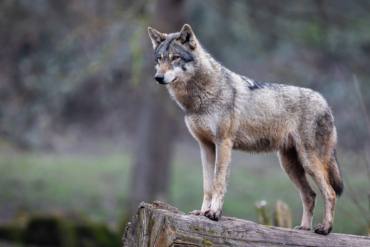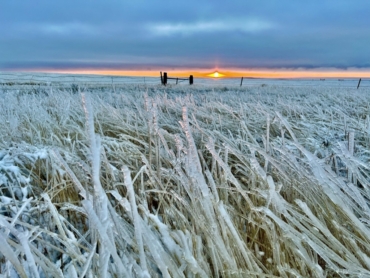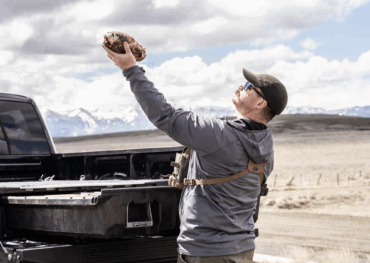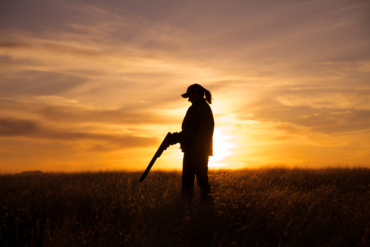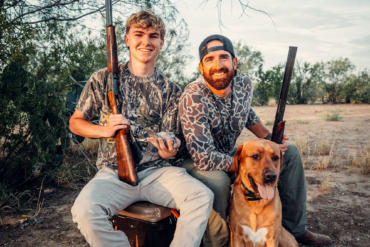The excitement at the start of bow season can lead to some common mistakes. These tips can help you avoid early-season pitfalls and create habits that last through winter.
Brett Seng, an avid hunter, photographer, and Mathews Archery ambassador, gave us advice on how to prevent spooking early-season game, hunt day prep, and why learning to read the land can pay off big.
These are tips he’s learned through years of hunting. We’ll start with more basic advice and then go deeper into why you should take off your boots.
Learn More About Mathews
How to Bowhunt
Dawn Warm-Ups
Bowhunting is like golf or baseball in that you will benefit from warming up and triggering muscle memory before you start.
“I made a rule for myself that no matter what day I hunt, the first arrow I fire will not be the one I shoot at the specific species I am hunting,” Seng said.
This can be done in your yard or in the headlights of your truck before you hit the trail.
Seng recommends carrying a roll of blaze orange tape and setting up a small target in some grass, like sage grass if you are in that terrain. He then shoots a few Judo heads at 20 yards at an inch-by-inch square of tape. A field point works if there’s a safe backdrop.
Don’t worry about aim, focus on your form. It doesn’t matter if your Judo head flies differently than your broadheads — because you tuned your bow with broadheads in mind, right?
As long as your shots are consistent, you know your form is dialed in.

Stay in Tune
One common pitfall among both beginners and 20-year veterans like Seng is getting rusty during the season. Bowhunters fall out of practice as the season progresses. Summer practice is good for building good form, but your muscles need frequent reminders.
“You should know your bow better than anything out there,” he said. Having confidence in your shooting changes the hunt.
He cites hunting legend Randy Ulmer, who boiled down his huge success to being better prepared for the last 10 seconds of a hunt.
“When you get your bow back and this animal’s in front of you, you want to know you are prepared, you are in tune, and that the hard part has been done,” Seng explained.
For him, the paramount rush from hunting is no longer releasing the arrow. He has confidence in his form and his Mathews bow, so now, an animal coming within range is his peak adrenaline.
Such preparedness also increases the chances for a faster, cleaner kill, which should make the hunt more enjoyable.

Take Risks
Rookie hunters may not realize the various ways you can spook an elk or deer that a veteran hunter does. Either way, Seng thinks it’s best to keep trying different things.
“When I was younger I would have all these [exciting] experiences … and then I stopped having as many,” he said.
As a novice, he’d stumble into many more animals than he does now. It was because back then, he didn’t know any better. While his youthful boldness in the field usually ended in an unsuccessful hunt, he would still see game and get his heart racing with hope and anticipation.
After 15 years of bowhunting elk, he had to change it up. He was getting too precise and has reembraced some of his youthful curiosity and boldness.
“Now I have this perfect combination of 75% experience, knowledge, and intuition; but then I still keep around this 25% this cocky, I don’t care, let’s-give-it-a-whack attitude.”

Thermals & Smoke Bombs
Scent is basically radar for deer, antelope, and elk. In more rugged terrain, you learn that they will hunker down in areas where the wind whips around. That gives them a way to detect predators from several directions.
If you hunt the Mountain West, or even hillier areas back East, learn to read thermals. If you are scouting land just before hunting season, observing the thermals may pay off more than where the elk are, as that can change into the season.
“Cold air falls, warm air rises. That is the most basic form of thermals,” Seng said. “After that, you can start to learn how the mountains interact with each other.”
As a day warms up, the last of the cold air can dump into a creekbed, which may hold some moisture as well. The cooler temps and swirling wind make it an attractive spot for an elk to bed down, he explained.
“From atop a hill, you may sense the thermals blowing into you. For that elk in there, he’s looking downwind, and once you get down there, you can feel winds at the back of your neck and it’s game over,” Seng said.
To prevent this, Seng spends more time observing. He advises that you put binoculars on the leaves or grass around an animal and watch for 15 minutes or more. You should see signs of how the wind is working around an animal, and whether it’s swirling.
Stand there for several minutes, use your smoke in a bottle, because you can understand how you need to approach from sightlines and avoid the wind.
Seng’s even gone so far as to let off smoke bombs to better understand thermals in certain areas. Nothing in season or at a dangerous time, but he’ll return to a spot where he spooked an elk earlier in the year and light a small smoke bomb to watch where the purple smoke flows.
Stalk, Don’t Walk
Seng thinks opportunities to harvest game tend to come in the back half of hunting week. Part of that is because hunters are overeager at first. Little things, like remembering pine cones or grasses crack and crunch underfoot. That in turn gets you to slow down and get a better pulse on the land and the species you’re hunting.
“If you’re walking too fast and you’re blowing out game, take your boots off,” he advised. “That’s your penalty box that’s going to pay off in the long run.”
This is more an early-season tip, of course. But it’s easy enough to stop, put your boots into a plastic bag and stuff them into a pack, and then quietly proceed into a hunting zone. Once you’re through an area where you will likely encounter game, you can throw the boots back on.
But try to remember how slow you moved on those quieter feet.
“I have a pair of moccasins that I made for myself [out of elk hide], and I haven’t harvested anything outside of those moccasins in the past six years,” Seng said. “I put those things on it’s like my Superman cape.”
Before that, he used thick wool socks.

Outsmart the Hunters
One last piece of general advice from Seng is to monitor human behavior. Sometimes the key to a successful hunt is to outsmart the other hunters.
If everyone is in a rush to get deep into the country — and the use of ATVs and e-bikes has increased this — chances are they’ll blow past or pressure game along the way. If so, someone hunting closer to the trailhead may be rewarded from the relatively low traffic and competition that day.
Similarly, hunters may chase signs of where elk have been, rather than where elk may have gone once all the shooting started. Going against the flow can put you in a better spot to observe and stalk your prey.
This post is sponsored by Mathews Archery. You can find bowhunting gear and more experiences on the company’s website.

